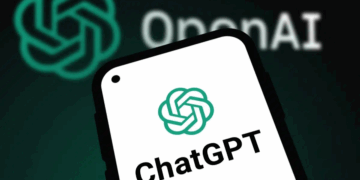Social media is full of Ghibli Glam AI-generated images, thanks to OpenAI’s ChatGPT-4o. People on Facebook, Instagram, and X are sharing their AI-created pictures. But in the excitement of making fun, artistic versions of themselves, many are unknowingly giving their facial data to AI companies. This includes pictures of their families, even young children, which raises big concerns about privacy and the safety of biometric data.
The Hidden Price of a Ghibli Makeover
In the race to create whimsical AI portraits, users are unknowingly handing over more than just pixels — they’re giving up their biometric data. These AI apps often collect, store, and analyze facial features, sometimes without fully disclosing how that data will be used. What’s even more concerning is that many include pictures of their families, including children, raising serious questions about consent and long-term privacy risks.
Your Face Is Already in the System
It’s not just the Ghibli trend. Every day, billions of people contribute to facial recognition databases — whether through unlocking smartphones, tagging friends in photos, or verifying identity on apps.
Whenever you upload images online or grant an app camera access, you may also be giving them permission to scan and store your facial details. This information creates a permanent digital fingerprint that, unlike a password, can’t simply be changed if leaked or misused.
Why Ghibli-Style Portraits Are More Dangerous Than You Think
People often underestimate how valuable facial data is. Passwords and credit cards can be replaced, but your face is forever.
The infamous Clearview AI case serves as a chilling reminder. The company allegedly scraped over 3 billion images from social media platforms, news outlets, and public records — without users’ consent — building a massive facial recognition database for law enforcement and private companies.
More recently, in May 2024, Australian tech firm Outabox experienced a devastating data breach. Facial scans, driving licenses, and addresses of 1.05 million users were exposed and leaked on a dark web platform ironically named Have I Been Outaboxed. This resulted in waves of identity theft, impersonation scams, and fraud complaints.
Retail facial recognition systems have also become common targets, making everyday shoppers vulnerable to data breaches.
Is a Cute Ghibli AI Portrait Worth Lifelong Risk?
The facial recognition technology (FRT) market is booming, expected to soar from $5.73 billion in 2025 to $14.55 billion by 2031 at a compound annual growth rate (CAGR) of 16.79%.
With this rapid growth, privacy concerns are rising. Several tech giants have been accused of using users’ images to train AI models without clear consent. On top of that, reverse image search services now allow anyone to trace a person’s online presence using just a photo, opening doors to stalking, harassment, and other serious risks.
How to Protect Yourself in the Age of AI
If you care about your digital privacy, it starts with awareness and caution. Here’s what you can do:
- Avoid participating in AI image trends, including Ghibli-style AI generators.
- Refrain from uploading high-resolution selfies to social platforms.
- Use PINs or passwords instead of facial recognition to unlock your devices.
- Regularly audit app permissions and disable unnecessary camera access.
Is a Cute AI Portrait Worth Lifelong Risk?
The allure of AI-generated portraits is understandable — they’re fun, creative, and trendy. However, the cost could be your permanent digital identity.
As AI blurs the lines between innovation and exploitation, it’s critical to prioritize safeguarding personal data. Before you share your next AI-crafted masterpiece, ask yourself:
Is it worth risking your privacy — forever?










